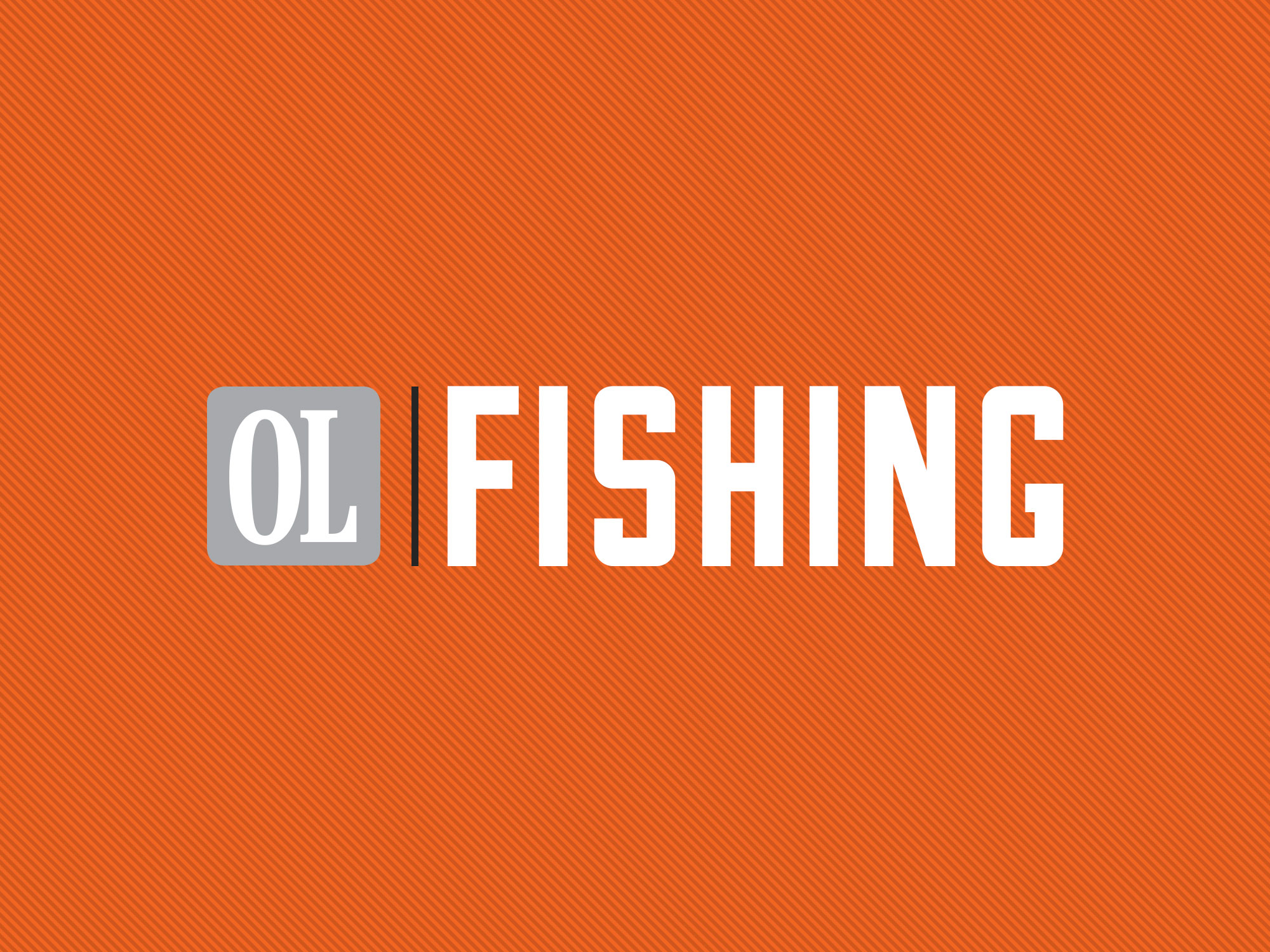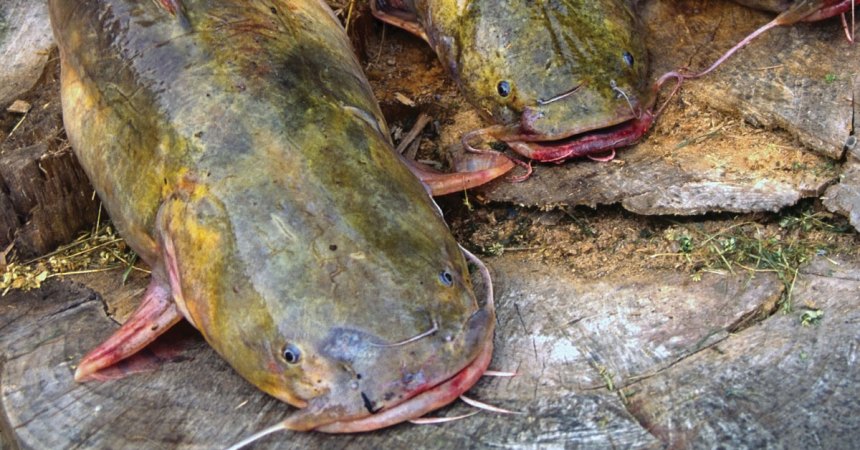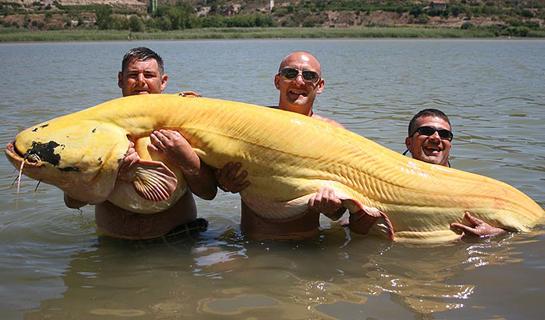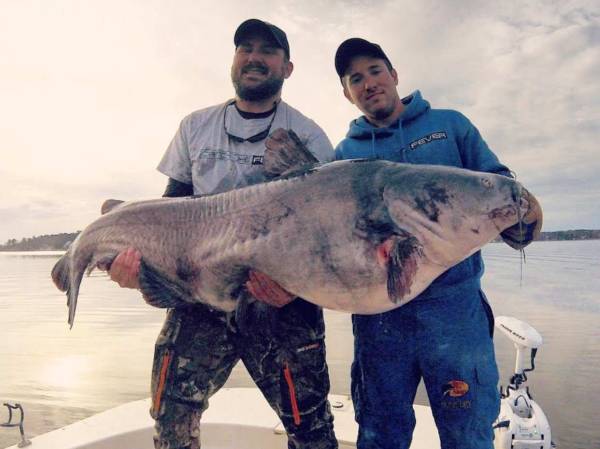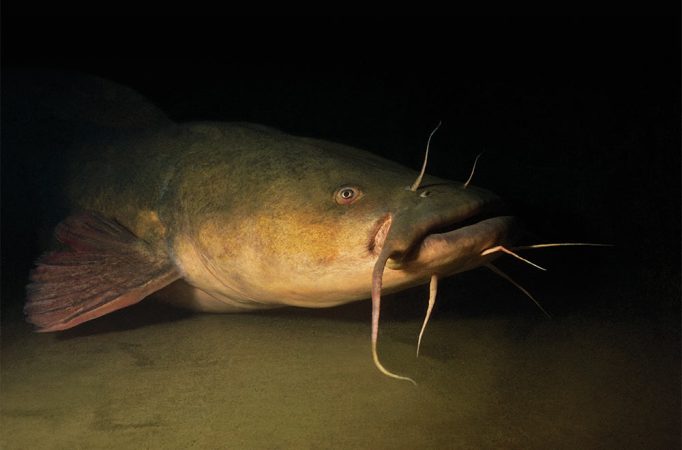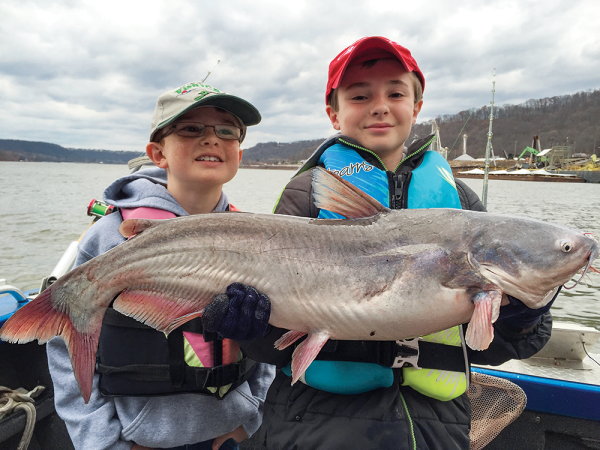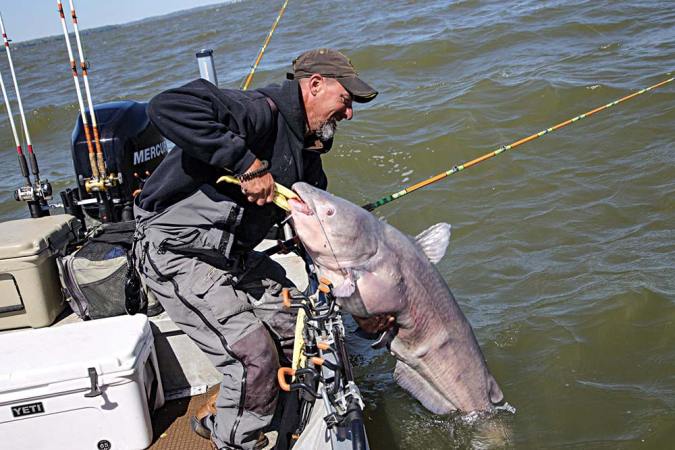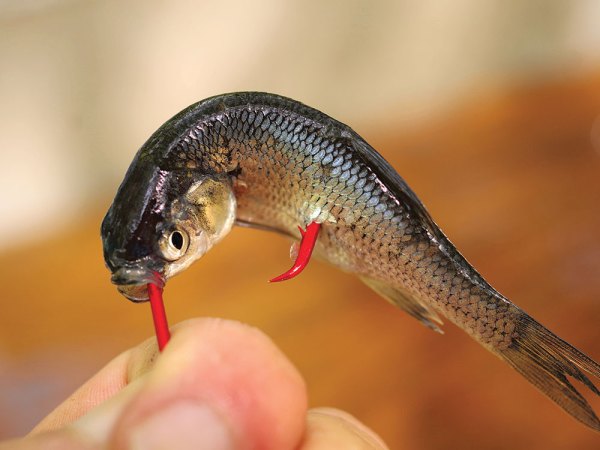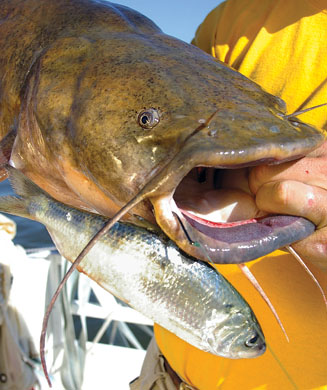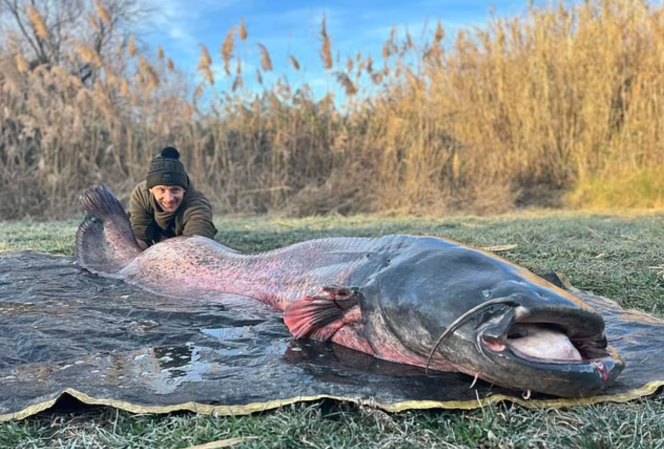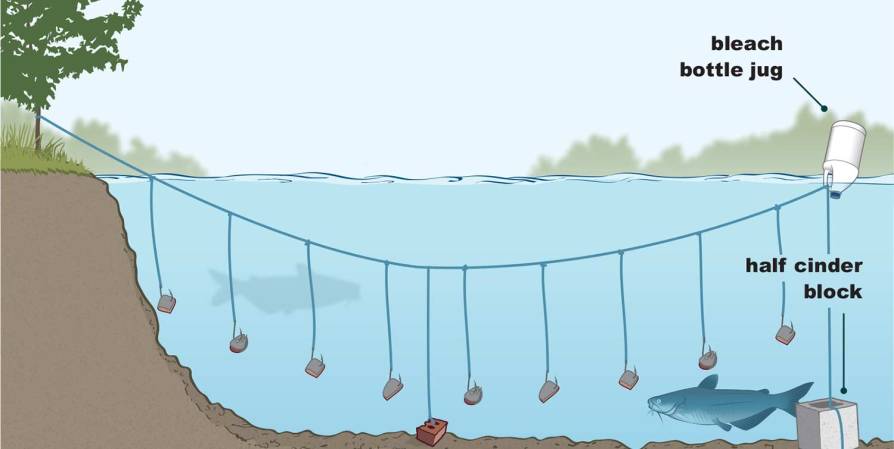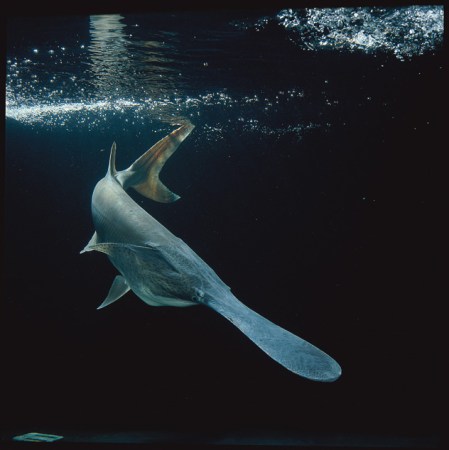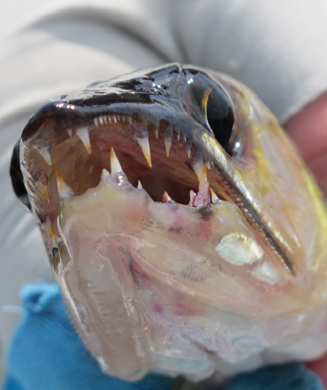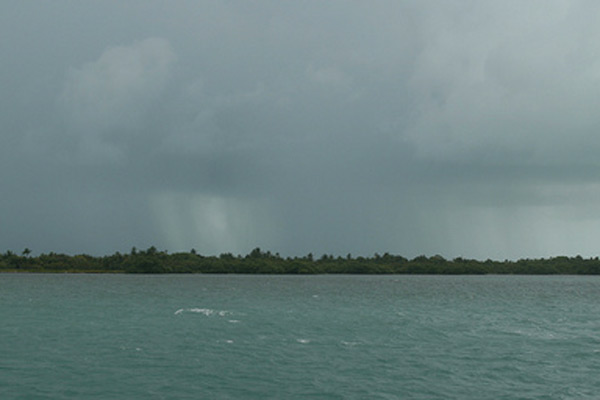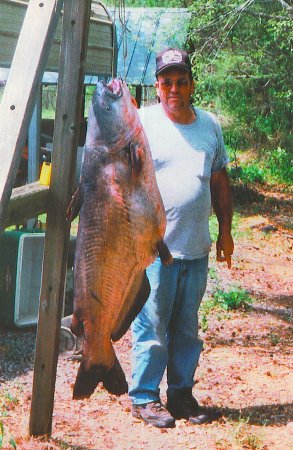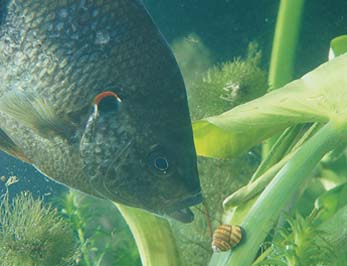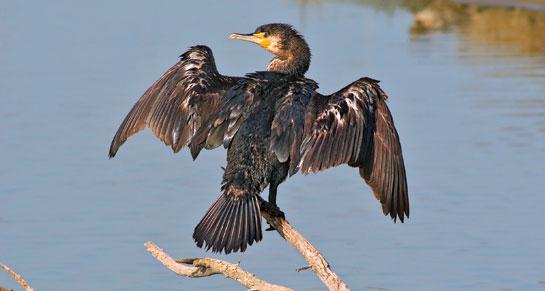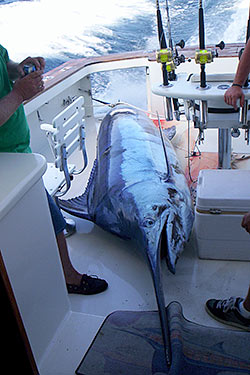I t is a horrible creature, more like a gigantic obese-bellied eel than a proper fish. Not something you’d want to meet while enjoying an evening swim; nor would your dog that could conceivably be eaten. If legends were provable, this might be the world’s largest catfish. But science has yet to verify stories of reputed 600-700 pounders from the 19th century. In all likelihood those fish were sturgeon. Not to fret, if you’re headed to the right place you’d have a good chance of catching one of the fantastic wels cats in the 100-pound class, and if you kept at it long enough, perhaps a 200-pound creature. Or bigger.
t is a horrible creature, more like a gigantic obese-bellied eel than a proper fish. Not something you’d want to meet while enjoying an evening swim; nor would your dog that could conceivably be eaten. If legends were provable, this might be the world’s largest catfish. But science has yet to verify stories of reputed 600-700 pounders from the 19th century. In all likelihood those fish were sturgeon. Not to fret, if you’re headed to the right place you’d have a good chance of catching one of the fantastic wels cats in the 100-pound class, and if you kept at it long enough, perhaps a 200-pound creature. Or bigger.
According to the International Gamefish Association (IGFA), the legit all-tackle rod/reel record now stands at 228 lb. 6 oz, from the River Mincio in Italy. That fish was taken by Guenther Schwierzy on 3/25/06. Interestingly, IGFA lists the wels by itself as it does the South American lau-lau, rather than including it beneath the catfish heading. Close on the heels of that wels record is the 226-pounder taken by Carl Smith on 3/24/06 from Spain’s Ebro River. Which brings us to this:
C arl Smith, who had never caught a catfish before, took three other wels in the 200-pound class the same day. His guide, Richard Davies of Ebro Angling Tours, told how that biggest fish ripped 100-yards of line from the angler’s reel, forcing Smith into the water in order to get a fighting angle on the cat. “I think the size of the fish made him a bit frightened to go in the water but it had to be done,” said Davies.
arl Smith, who had never caught a catfish before, took three other wels in the 200-pound class the same day. His guide, Richard Davies of Ebro Angling Tours, told how that biggest fish ripped 100-yards of line from the angler’s reel, forcing Smith into the water in order to get a fighting angle on the cat. “I think the size of the fish made him a bit frightened to go in the water but it had to be done,” said Davies.
To say the Ebro River is hot is a bit of an understatement. The other day former Outdoor Life staffer Will Snyder called me from Spain telling about a photo of an Ebro wels caught just after it had fed. The legs of a great blue heron were evidently sticking from its mouth. Warm and murky through much of its reaches, the Ebro is Spain’s longest river with the greatest discharge of any on the Iberian Peninsula. In 1974, German fishing biologist and fanatic angler Roland Lorkowsky released several thousand wels fry into the Ebro. The rest is history. The fish grabbed hold like a Jack Russell terrier on a junkyard rat.
I n some reaches the voracious wels has wiped out indigenous species almost completely. Like wildfire, it has spread to and infested other rivers and lakes in the Ebro basin. Reaching the end of its 565-mile course the Ebro dumps into the Mediterranean sea. It is here in the river’s lower reaches where you can experience the least crowded fishing. The lower water also boasts the bonus of anadromous species influx—like shad—that only add to the never –ending banquet laid out for the wels. These gorging cats can put on upwards of 10 pounds of weight a year. It is not unrealistic to imagine a 250, even 300 pounder coming to the hook in the near future.
n some reaches the voracious wels has wiped out indigenous species almost completely. Like wildfire, it has spread to and infested other rivers and lakes in the Ebro basin. Reaching the end of its 565-mile course the Ebro dumps into the Mediterranean sea. It is here in the river’s lower reaches where you can experience the least crowded fishing. The lower water also boasts the bonus of anadromous species influx—like shad—that only add to the never –ending banquet laid out for the wels. These gorging cats can put on upwards of 10 pounds of weight a year. It is not unrealistic to imagine a 250, even 300 pounder coming to the hook in the near future.
Broad-headed and gape-mawed like our flatheads, the wels is a powerful, slimy, scaless beast with rows of small teeth. Typically it prefers holes with sunken cover, though it will feed in open water. It is said that the wels can use its sharp-pointed pectoral fins to create eddies, disorienting prey before they are engulfed. Males guard the nest of eggs and if water levels drop, they will use their tails to splash the eggs to keep them wet. Small wels are said to be good to eat but large specimens are highly fatty and likely high in contaminants. The eggs are poisonous.
It is easier to say what wels do not eat, rather than create a laundry list of what they do. Anglers bait with everything from leeches, live eels, dead and live baitfish, clumps of large worms, guts of anything and—darkly—sometimes live, tethered ducks.
If the Ebro fishing interests you, a thorough internet search will turn up several outfitters and guest houses through which you can book a wels trip.
Like all catfish, wels have highly developed sensory receptors. Aside from scent and taste they “hear” vibrations remarkably well. For more than 100 years European cat fishermen have relied on homemade wood calling devices called clonks or klonks (take your pick) that look a bit like the thin foreleg of a hoofed animal. The tools are thrust into the water, capturing a bubble, swished backwards then plucked out creating a yet different sound that might be likened to elephant flatulence. Who knows whether the commotion attracts cats that think it’s feeding fish, injured fish, or are just curious. Attract it does, however. The technique works in rivers and lakes, and some flathead anglers in the U.S. have tried it with positive results. At least one outfit here has been selling a clonk. Check www.catfishcaller.com.
I n Eastern Europe where the technique evolved, it has proven so successful that it is banned on many areas of the Danube River. Along stretch of the Danube in Serbia, only commercial fishermen are permitted to clonk. But then again, commercial fishermen there can also use dynamite.
n Eastern Europe where the technique evolved, it has proven so successful that it is banned on many areas of the Danube River. Along stretch of the Danube in Serbia, only commercial fishermen are permitted to clonk. But then again, commercial fishermen there can also use dynamite.
